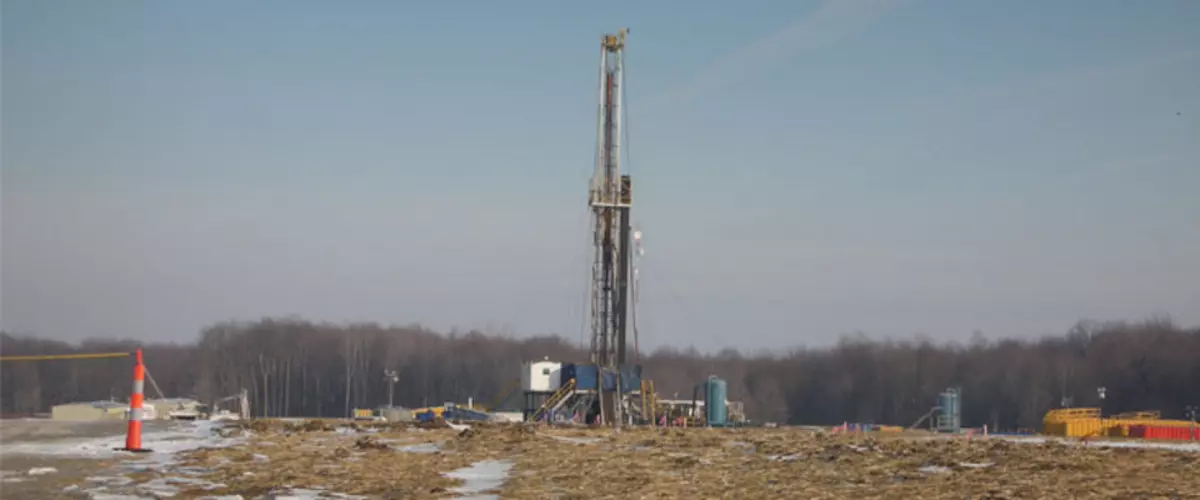The Fracking MEL
MEL Activity
There is one form of this MEL Fracking Activity....a pre-constructed (pcMEL). The pcMEL limits student choices, which may be good for the first time the activity is introduced to a class or if you are working at earlier grade levels. Below the activity link are additional teaching resources that will help students learn more about fundamental scientific principles related to this issue.
Overview
This article provides an introduction to the Fracking pcMEL plus suggestions from classroom use including management tips and specific areas in which students might have difficulties and suggestions for assisting students with their understanding, such as providing additional background information and hands-on investigations.
Evaluating the Connections Between Fracking and Earthquakes TES (Acrobat (PDF) 1019kB Jun4 18)Next Generation Science Standards Performance Expectations
MS-ESS2-5: Earth's Systems
- Develop a model describing the cycling of water through Earth's systems driven by energy from the sun and the force of gravity.
HS-ESS2-5: Earth's Systems
- Plan and conduct an investigation of the properties of water and its effects on Earth materials and surface processes.
MS-ETS1-1: Engineering Design
- Define the criteria and constraints of a design problem with sufficient precision to ensure a successful solution, taking into account relevant scientific principles and potential impacts on people and the natural environment that may limit possible solutions.
HS-ETS1-3: Engineering Design
- Evaluate a solution to a complex real-world problem based on prioritized criteria and trade-offs that account for a range of constraints, including cost, safety, reliability, and aesthetics as well as possible social, cultural, and environmental impacts.
HS-ESS3-2: Earth and Human Activity
- Evaluate competing design solutions for developing, managing, and utilizing energy and mineral resources based on cost-benefit ratios.
HS-ESS3-4: Earth and Human Activity
- Evaluate or refine a technological solution that reduces impacts of human activities on natural systems.
Lateral Reading (LR) Resources
What does it mean for a source to be credible? Why should we investigate whether a source is credible before we read it? How do we decide whether online sources are credible? Use lateral reading to find out.
Use lateral reading to evaluate the credibility of three sources related to fracking.
These LR sources connect to Evidence #2: During recent years, the number of earthquakes near fracking sites was 11 times higher than the 30-year average.
Use the LR Guiding Questions to evaluate the credibility of each source.
- LR Guiding Questions (Acrobat (PDF) 28kB Jun8 23)
- Source A: Earthquakes in Texas doubled in 2021. Scientists cite years of oil companies injecting sludgy water underground.
- Source B: Does hydraulic fracturing cause earthquakes?
- Source C: Studies confirm earthquakes in the midwestern US are caused by the fracking boom
Other Resources
This Plausibility Ranking Task (PRT), which may be completed prior to using any MELs, helps students to understand the role of evidence in supporting or refuting models.
- Plausibility Ranking Task (Acrobat (PDF) 76kB May6 24)
Digital Resources
This this USGS Evening Public Lecture, Yes. Humans Really Are Causing Induced Earthquakes, Dr. Justin Rubinstein shares what we know about induced earthquakes, the increased seismic activity in Oklahoma and how fracking and wastewater injection affect the surrounding subsurface layers.
This Oklahoma Earthquake Animation is from the USGS public lecture above.
In this lab, Induced Seismicity – Are humans causing earthquakes?, from the NSF-funded EarthScope Consortium students investigate the processes involved in unconventional oil and gas resource production, i.e. hydraulic fracturing. Using the IRIS Earthquake browser, they conduct a detailed comparison of hydrofracking wells, waste water disposal wells, and seismicity in Oklahoma. They look for correlations in the data and use evidence from their investigation to support their claims.
Myths and Misconceptions About Induced Earthquakes from Dr. Justin Rubinstein at the USGS shares six facts about induced earthquakes.
Induced Earthquakes from the USGS provides current research on induced earthquakes due to human activities, sharing observations, modeling, and hazard estimation.
This map and bar graph displays the annual number of earthquakes with a magnitude of 3.0 or larger in the central and eastern United States, 1973–2023. The long-term rate of approximately 25 earthquakes per year increased sharply starting around 2009.
A Stanford study finds that the recent spike in triggered earthquakes in Oklahoma is primarily due to the injection of wastewater produced during oil production – but not from fracking.
Oklahoma's Shaky Ground tamed by industry, regulatory cooperation describes how the Oklahoma Corporation Commission and the Oklahoma Geological Survey collaborated with industry to regulate wastewater disposal wells, leading to a significant reduction in the number of induced earthquakes.


![[reuse info]](/images/information_16.png)








